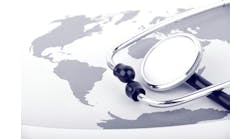When I was in school, a roommate once said with a smile, "Studying is easy. Just read everything and forget nothing."
That was obviously a joke, or a recipe for anxiety. I immediately (or at least after a while) understood the reality that I couldn't read everything.
'Read Everything, Remember Everything' was out-of-reach, but the external expectations in school were reasonable.
Now we have the Internet and hypertext and browsers that encourage tabbed browsing and customized home pages loaded with gadgets full of neat content and Google and Amazon and Wikipedia and links.
"Reading Everything," when you initiate to research something on the web, produces a literal explosion of source material.
I think the MBTI STs among us carry a lot of guilt because we're hopelessly behind in our reading, and, paradoxically, in this new world, the more we read, the further behind we get. So, the best strategy to catch up and avoid the guilt is to 'Read Nothing.'
Where on earth did this post come from? Recently, I asked some of my brightest friends who work in healthcare to read something I wrote; a few told me, as a matter of principle (or time management), they don't read. Ironically, that seemed to make them feel guilty as well!
Do you have smart friends in our industry who boast that they don't read? What's going on with that?
Sponsored Recommendations
Sponsored Recommendations

